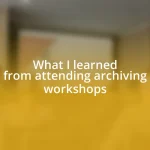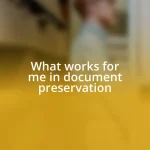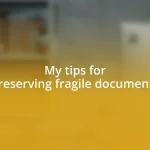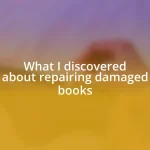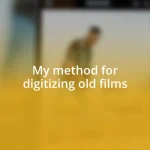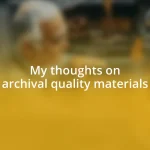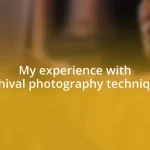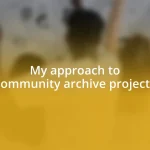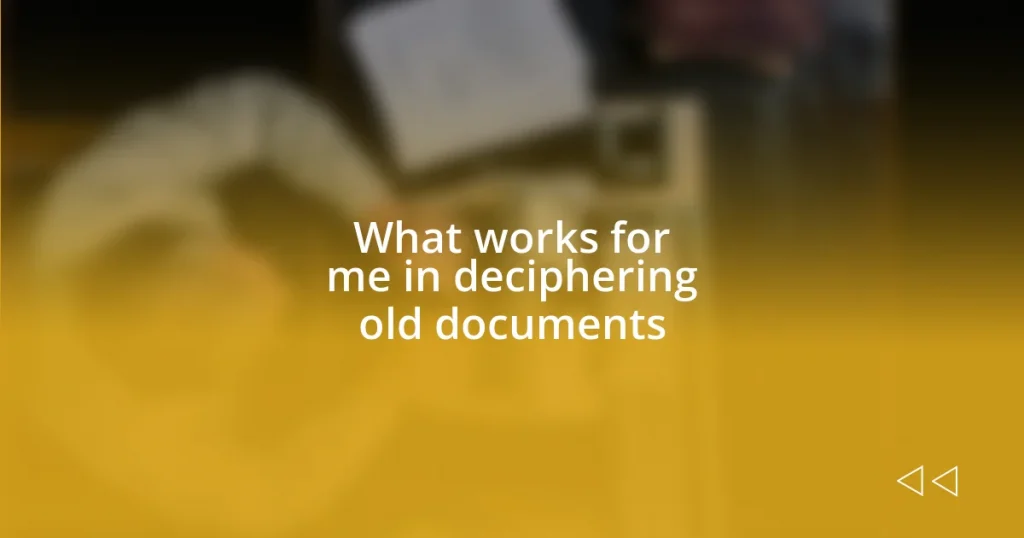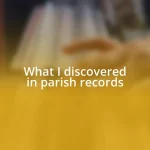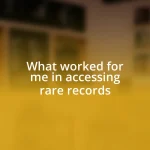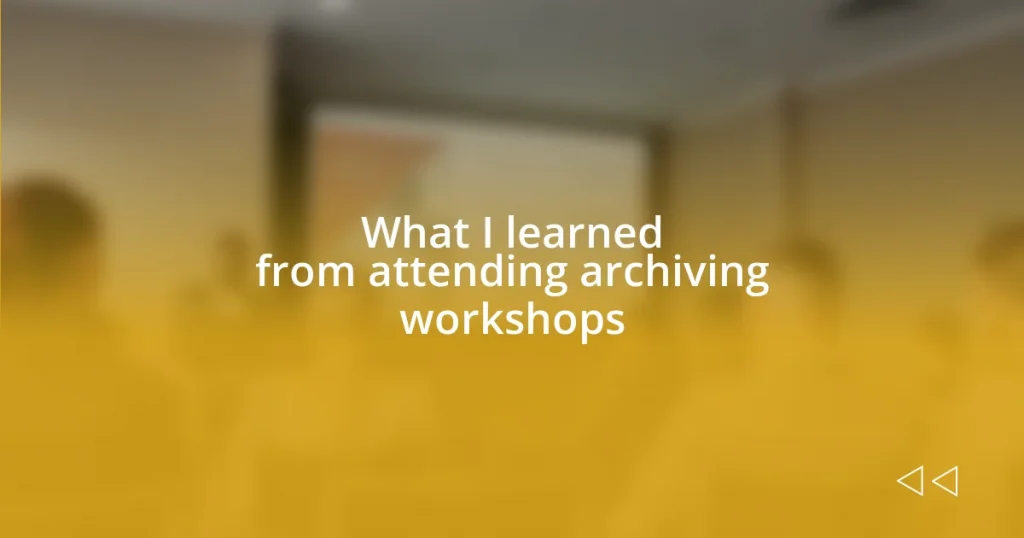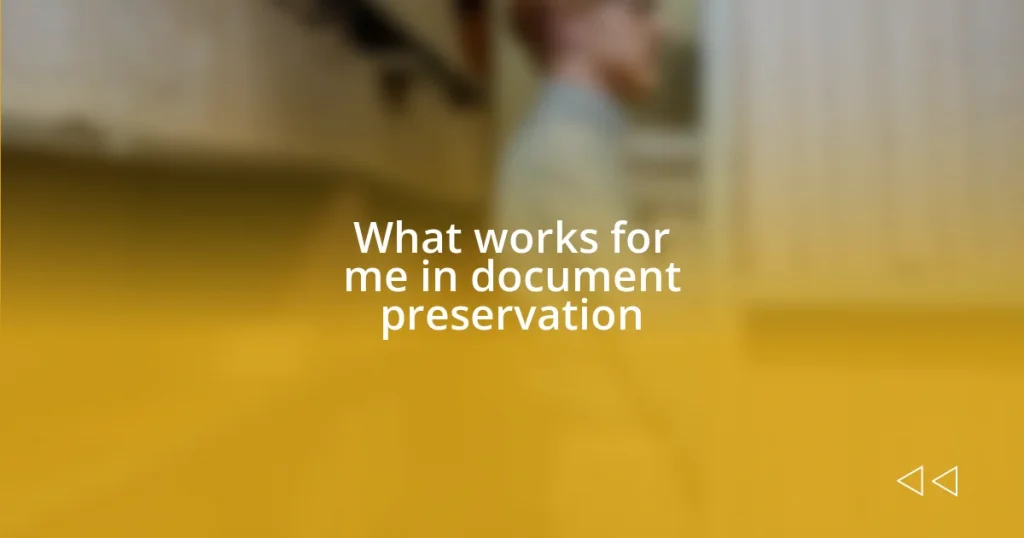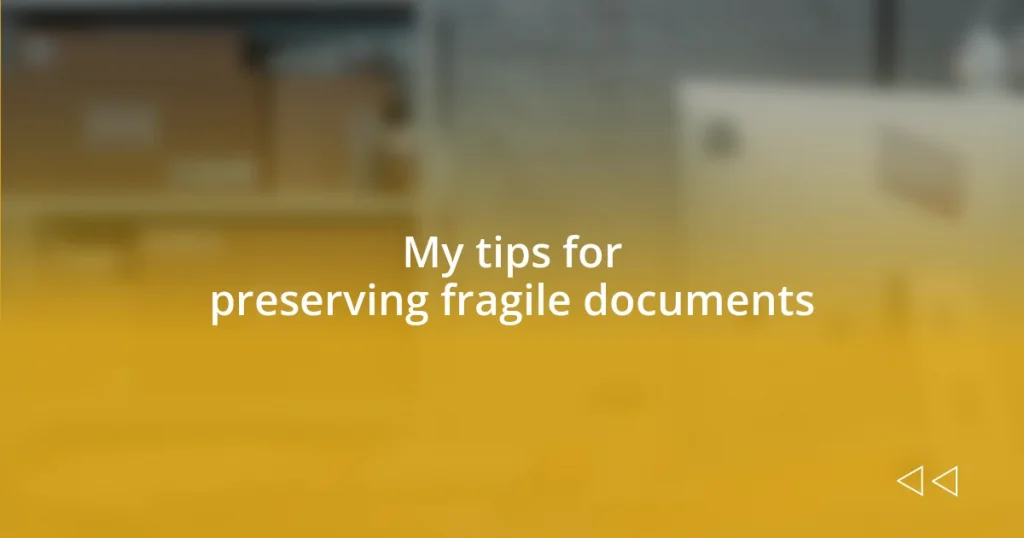Key takeaways:
- Understanding old documents involves deciphering archaic language and handwriting, often requiring context and emotion to fully appreciate their significance.
- Utilizing tools like OCR software, paleography resources, and online forums facilitates the process of decoding and interpreting historical texts.
- Engaging with community resources, practicing with example documents, and analyzing historical context enhance skills and deepen connections to the past.
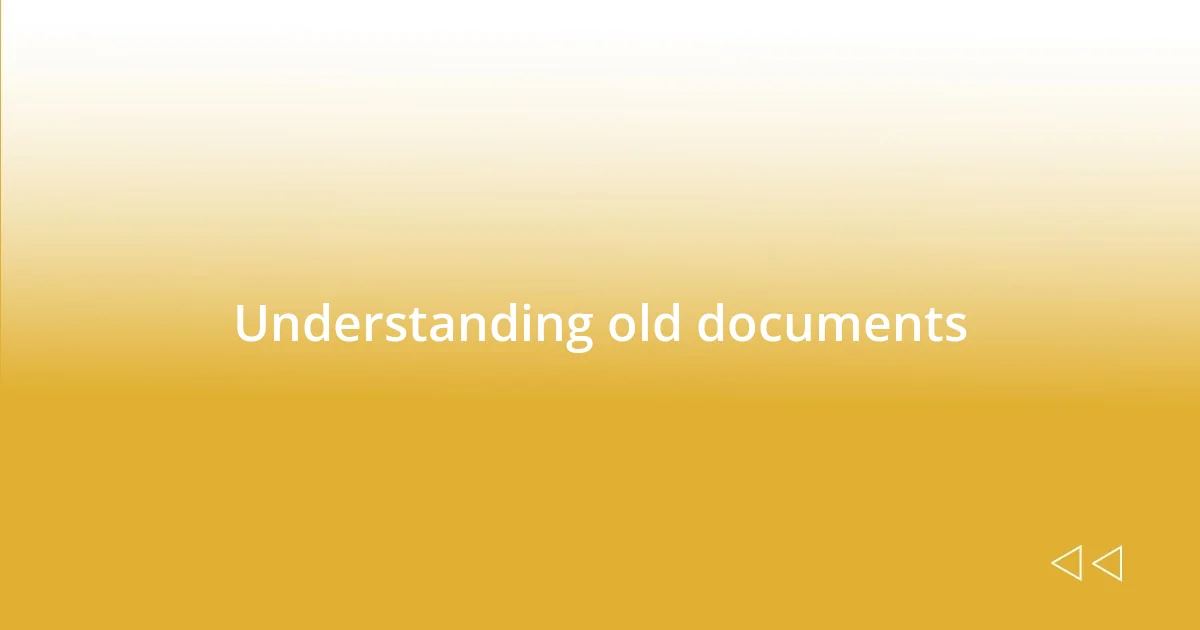
Understanding old documents
Understanding old documents can often feel like deciphering a secret code. I remember the excitement I felt when I first unraveled a handwritten letter from the 1800s; the elegant loops and swirls of the pen were almost like art. What struck me was how each flourish told a story—not just through words but through the writer’s style.
Old documents frequently use language that may seem foreign to us today. For instance, expressions or phrases from centuries ago might carry different meanings now. While exploring some marriage licenses, I found terms like “dowered” that puzzled me at first. It made me wonder: how often do we lose the richness of language as it evolves over time?
Moreover, the physical condition of these documents often adds layers to their understanding. The smell of aged paper can evoke a sense of history, while stains and tears hint at stories untold. As I carefully handled a tattered birth certificate, I felt a connection to the past, as if the struggles and joys of the individual were embedded within those worn edges. What treasures could these old documents reveal about our shared human experience?
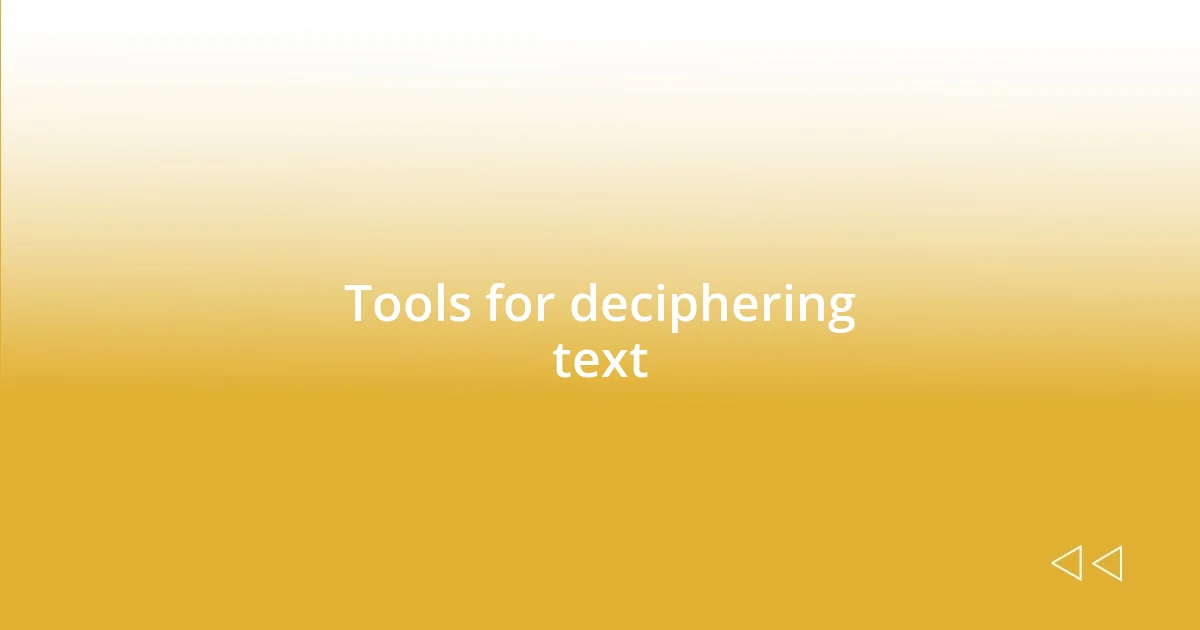
Tools for deciphering text
Tools for deciphering text play a crucial role in transforming the daunting task of reading ancient scripts into an engaging experience. I’ve often leaned on digital tools like Optical Character Recognition (OCR) software, which can effortlessly convert scanned images of documents into editable text. The thrill of seeing a previously indecipherable text transform before my eyes never gets old. When I first used an OCR tool on a faded typewritten letter, it felt like bringing a ghost back to life!
Handwritten text presents a unique challenge, and that’s where online paleography resources come in handy. These sites provide comprehensive guides and examples, making it easier to understand different styles of penmanship from various eras. I recall struggling with an ornate script that looked more like a piece of art than writing until I discovered a paleography community online. Engaging with others brought insights that were not just educational but deeply enjoyable, turning my frustrations into moments of discovery.
Online forums and databases offer a treasure trove of reference material, including dictionaries and glossaries for archaic terms. I once stumbled across a forum dedicated to genealogy research, which led me to a specialist who patiently answered my questions about a cryptic abbreviation I encountered. This kind of collaborative spirit makes deciphering text not just manageable but also a communal journey filled with shared passion and learning.
| Tool Type | Description |
|---|---|
| OCR Software | Converts images of text into editable documents, making old writings accessible. |
| Paleography Resources | Provides guides to understanding historical handwriting styles, aiding in interpretation. |
| Online Forums | Creates a platform for users to share insights and dilemmas related to deciphering texts. |
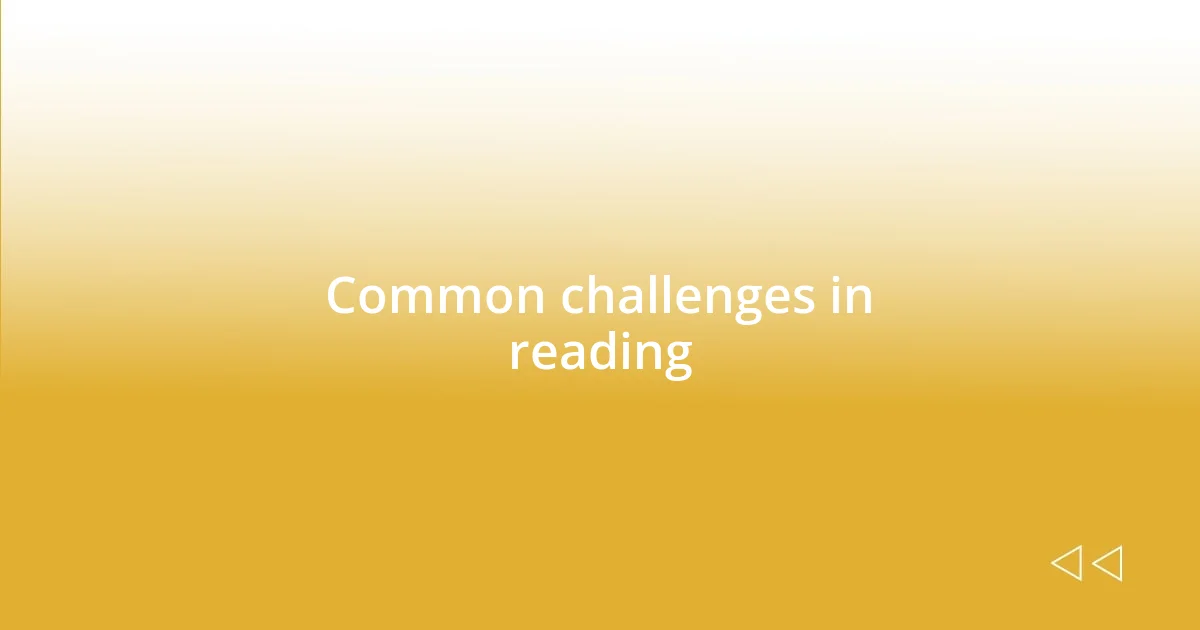
Common challenges in reading
Reading old documents comes with its own set of hurdles, many of which can be surprisingly frustrating. I remember staring at a beautifully written will from the 1700s, only to be stumped by archaic legal jargon that felt like a different language altogether. In those moments, it can be overwhelming, especially when the thrill of discovery turns into a struggle to comprehend the very words that were once meaningful to someone else.
Here are a few common challenges I encounter while reading old documents:
- Obscure Language: Words or phrases that have fallen out of use can lead to confusion.
- Illegible Handwriting: Various styles of penmanship, especially ornate scripts, can make reading a chore.
- Physical Wear and Tear: Faded ink or paper damage can obscure crucial details.
- Contextual Knowledge: Understanding the historical and cultural context is vital but often lacking.
- Parochial References: Local idioms or people mentioned may not have relevance today, complicating comprehension.
Another challenge that often surprises me is the emotional weight these documents carry. Once, as I pored over a faded love letter from the early 1900s, the ink faded in spots seemed to reflect the joy and heartache of its writer. It struck me that what I was reading was more than just a document; it was a portal to someone’s intimate thoughts and feelings. When the words begin to resonate with the human experience, reading shifts from a chore to a journey—yet it can be a bumpy ride when clarity is elusive.
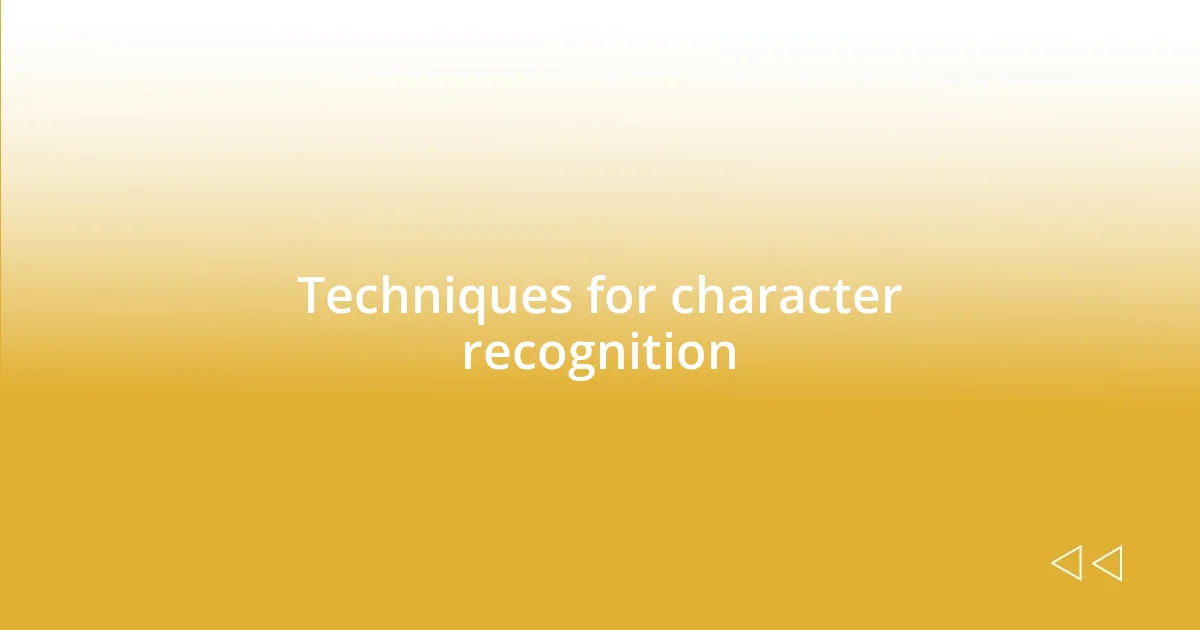
Techniques for character recognition
Recognizing characters in old documents can feel like deciphering a code, and I’ve found a few techniques that really help streamline the process. One approach I often use is breaking down the text character by character, especially when dealing with difficult handwriting. When I encountered an archaic script that seemed like a mix between art and ruins, taking it slow allowed me to connect patterns in the letters, which ultimately helped me make sense of entire words. Have you ever looked at a jumble of letters and suddenly seen a familiar shape? It’s a subtle thrill when everything starts to click into place.
Another effective technique is utilizing high-contrast lighting to enhance visibility. I remember sorting through an old diary, the ink faded to near invisibility. By adjusting my light source, I could see the subtle variations in ink depth, revealing hidden letters that were nearly lost. It’s fascinating how light can breathe life into words that feel long forgotten—have you had an experience where the right light made all the difference?
Lastly, experimenting with magnification tools can be a game changer. I once found myself bogged down with a delicate manuscript filled with tiny, ornate letters that danced on the page. By employing a simple magnifying lens, those characters transformed from indistinct blur to clear text I could actually read. It made me wonder how often we overlook the details in our everyday lives, just waiting for the right perspective to bring them into focus. Each of these techniques has not only enhanced my reading experience but also deepened my appreciation for the intricacies of historical documents.
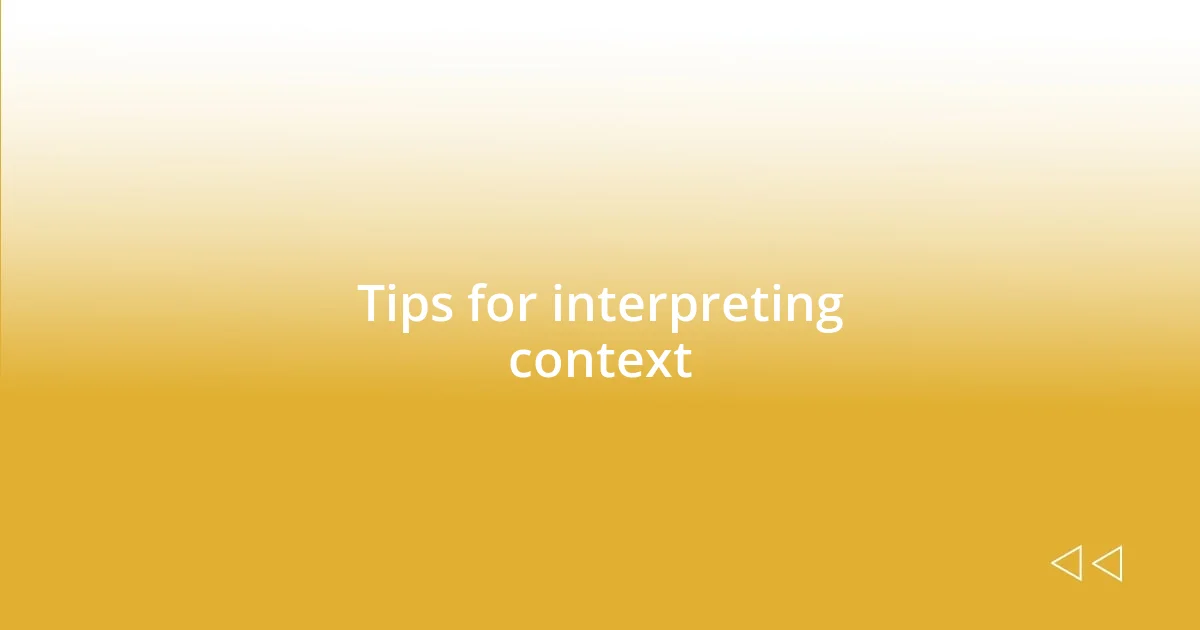
Tips for interpreting context
When interpreting the context of old documents, I find it’s essential to put myself in the shoes of the original writer. I remember finding an old diary filled with seemingly mundane entries, yet as I immersed myself in the writer’s world—a period of intense social change—the words transformed. Suddenly, those simple notes about daily life revealed so much about the struggles and triumphs of that era. Have you ever felt like a time traveler through someone else’s experience just by connecting with their words?
I often consider the cultural and historical nuances that might influence a document’s content. Once, while examining a series of letters exchanged during a significant historical event, I discovered references that initially puzzled me. Researching those events—like societal norms or prevalent issues—helped me grasp the emotional weight behind every line. It’s these layers of meaning that can make old documents not just readable, but profoundly moving. Aren’t you curious about the untold stories that lie hidden in the margins of history?
Moreover, taking the time to analyze the relationships among people mentioned in the documents has been particularly enlightening for me. I vividly recall sifting through a collection of letters that hinted at a long-running family feud. Understanding the context of those relationships added a dramatic flair to the words on the page. Are you aware of how much an individual’s or a family’s dynamics can shape the narratives we uncover? Each document becomes a puzzle piece in a larger story, connecting us to past lives, emotions, and legacies.
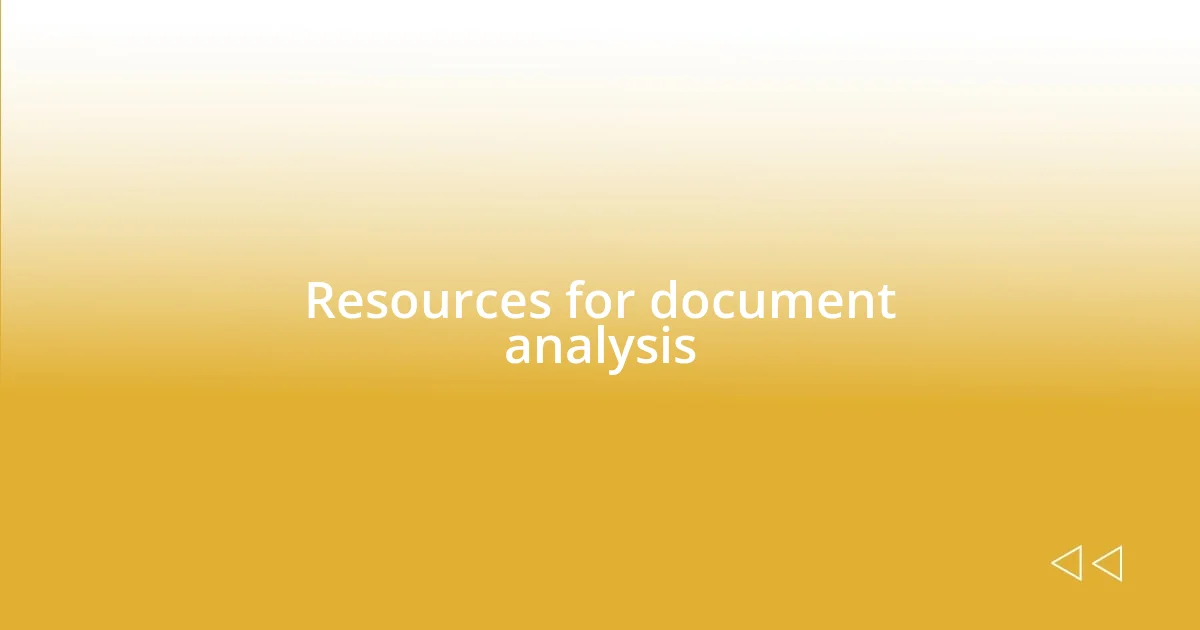
Resources for document analysis
I’ve found that certain online databases can be an absolute treasure trove for document analysis. For instance, I once accessed a digitized archive that specialized in historical newspapers. As I scrolled through faded articles from decades past, I felt a surge of excitement seeing how the language and style evolved over time. Have you ever stumbled upon a newspaper clipping that made you see a historical event in a new light? Digging into these resources can reveal layers of context and public sentiment that enrich our understanding.
Another invaluable resource I highly recommend is specialized software designed for text recognition and enhancement. Once, while grappling with a particularly challenging handwritten letter, I used an OCR (optical character recognition) tool that helped digitize the text. To my astonishment, it transformed the once indecipherable script into clear, editable words. This experience made me realize the huge impact technology can have on our ability to access and interpret historical documents. Have you explored any tools that made your analysis a smoother process?
Lastly, connecting with local historical societies or libraries can yield remarkable findings. I remember attending a workshop hosted by a local archive, where experts shared tips on deciphering scripts and understanding document provenance. Engaging with others who share the same passion not only expands my knowledge but also inspires me to dig deeper. How often do we tap into the wisdom of our community? Those personal interactions can provide insights that books alone might miss, making history feel more tangible and alive.
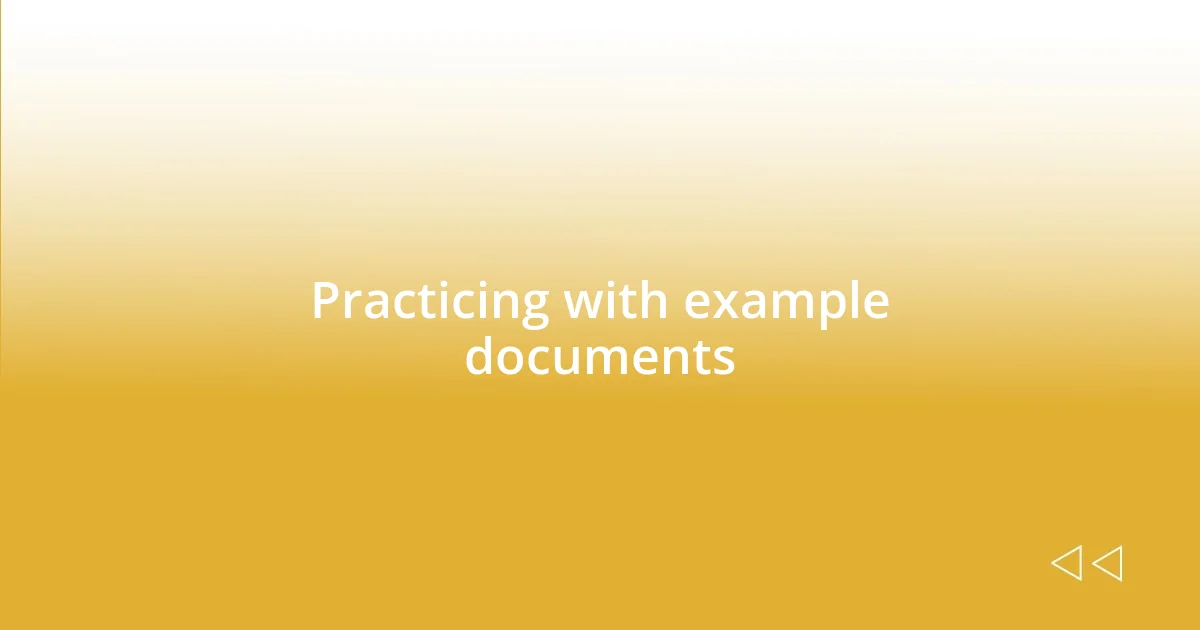
Practicing with example documents
Practicing with example documents can be a game-changer in honing your skills. I remember once spending a weekend poring over a collection of old wills. At first, the legal jargon seemed overwhelming, but as I broke down each document sentence by sentence, I discovered intriguing stories behind the names. Isn’t it fascinating how even the most official documents can reveal the complexity of human relationships?
Exploring varied examples, like old letters or maps, can also fine-tune your interpretation skills. I once came across a faded letter written in a beautiful, flowing script. With each line I decoded, I could almost hear the voice of the writer; it felt intimate and personal. Have you ever experienced that thrill of connection when interpreting a letter as if you were having a conversation with the past?
I often challenge myself with tasks like recreating the context of an old photograph or diary entry. There was a time when I attempted to describe a scene from a sepia-toned photograph of a family gathering. By studying the clothing and compositions, I crafted a narrative about their lives during that time, transforming a simple image into a vivid snapshot of history. How rewarding is it to breathe life into a moment long gone and connect it with the present? Practicing with these documents not only sharpens our skills, but it also deepens our appreciation for the stories they hold.
